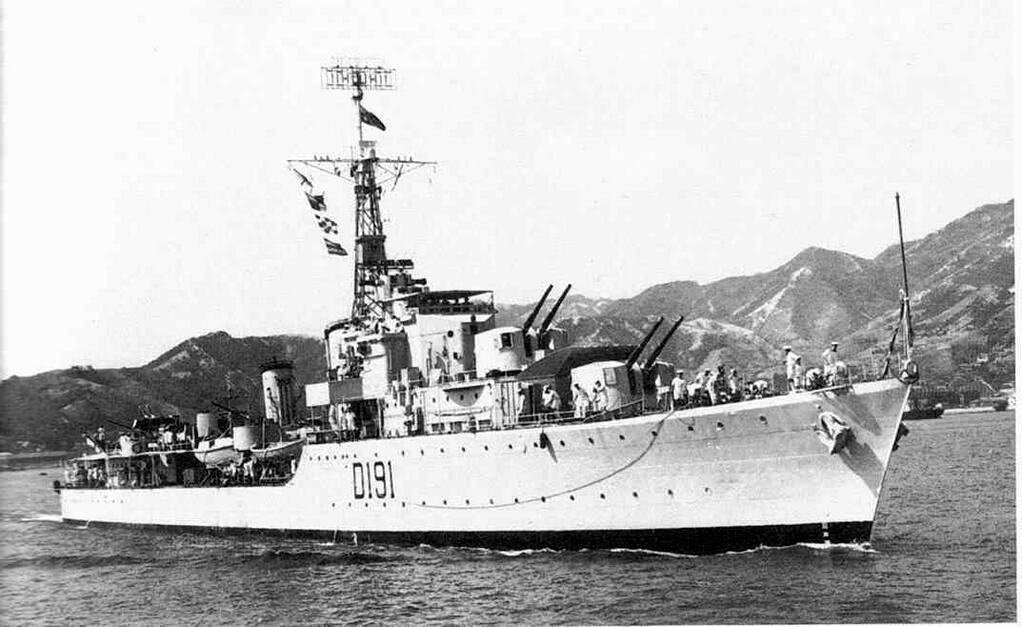HMAS BATAAN
- HMAS BATAAN was the only Tribal class destroyer not to be named after
a people or nation of the British Empire. The Canadian ships took their
names from native Indians while the Australians named theirs after Aboriginal
tribes. As a gesture to the United States for naming one of their ships
USS CANBERRA, the Australian navy named this Tribal BATAAN in honour of
General Douglas MacArthur. Under MacArthur's command, American and Philipino
troops defended the Bataan Peninsula (Philipines) for three months before
having to withdraw.
 |
| HMAS BATAAN (Photo credit unknown) |
The ship started service late in the war, being commissioned on 25th May 1945. Her first assignment was to join Task Force 74 in Subic Bay, Philippines. In company with HMAS WARRAMUNGA, they were preparing for the final assault on Japan when the war ended. She became part of the naval force that was present in Tokyo at the official Japanese surrender on 2nd September 1945. The next task for BATAAN was the rescue of prisoners of war and internees from official and unofficial camps prior to their embarkation to a hospital ship. There were other missions of mercy so she stayed in Japanese waters until November.
In June 1950, BATAAN'S peacetime routine of exercises, visits, and refits was interrupted by the outbreak of the Korean War. The Australian government placed her at the disposal of the United Nations and by 5th July, she joined the task force operating in the Yellow Sea. For most of the time, BATAAN was employed on routine escort and anti-submarine duties although she did carry out some bombardments. After a refit in Sydney Australia in June 1951, she and WARRAMUNGA were back in Korean waters by early 1952. Off Tacdong-Man, five 76mm shells hit the destroyer. Four missed their mark but the fifth destroyed the Captain's cabin. Luckily, there were no casualties.
On the 19th and 31st May 1952, BATAAN participated in two separate "Round Up" Operations. Republic of Korea forces would land on a peninsula and deal with all of the equipment and enemy soldiers which got in their way. Ships, cruising off shore, would provide bombardment in support of their action. By July, BATAAN joined WARRAMUNGA, HMCS NOOTKA and HMCS IROQUOIS in the Yellow Sea to provide screening for aircraft carriers and shore bombardments mainly around Haeju-man.
The destroyer remained in service with the Royal Australian Navy after the Korean War. In 1954, she was laid up in reserve awaiting conversion to an anti-submarine escort similar to HMAS ARUNTA. The conversion was cancelled in 1957 and she was placed on the disposal list. By the end of 1958, BATAAN had been sold for scrap.